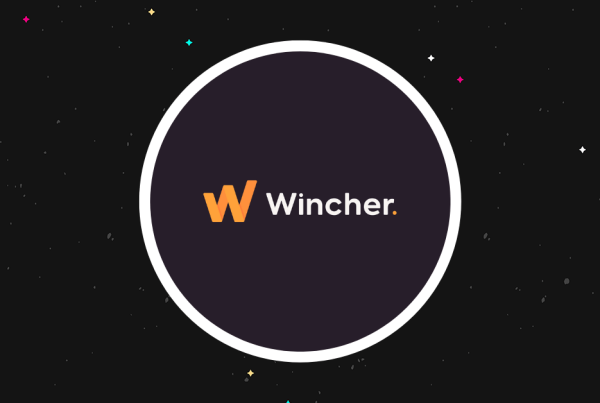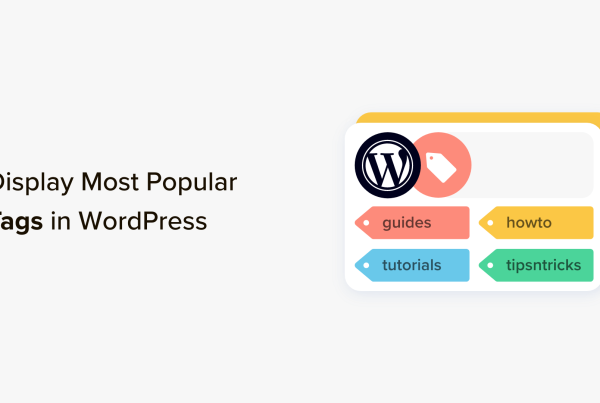? In this post, I hope to exhaust all the possible options for those seeking ways on how to monetize a newsletter — no matter the size, industry, or subscriber demographics.
? Table of contents:
Premium & paid subscriptions
One of the most popular methods for monetizing a newsletter is using premium or paid subscriptions. Every newsletter creator should seriously consider this option, but it’s not one you’ll want to rush into.
If you already have a relatively large and devoted subscriber base, moving to a paid subscription model might not be the right option. Will your audience be put off by a sudden switch from free to paid? Are you going to continue offering some kind of free content alongside a premium subscription service?
Before committing to a paid subscription model, you may want to poll your audience to see if they’d be willing to pay for your content. You’re likely only going to get responses from your most active subscribers, so you’ll have to determine if that’s enough information to go on.
A number of platforms make it easy to run a paid subscription newsletter. Here are some options to consider:
- Substack – The most popular platform for monetizing your newsletter via paid subscriptions. Substack allows you to easily separate free content from paid.
- Ghost – Started out as a blogging platform similar to WordPress, but has evolved into a full publishing platform that allows you to publish premium content.
- Revue – Integrates with your Twitter account and allows you to send out a free or “Members” newsletter that subscribers pay to read.
- Memberful – Another platform that allows you to create a members-only newsletter and integrates with other email platforms .
- Beehiiv – Includes flexible tools for creating a monetized email newsletter and doesn’t take a cut of your revenue.
- Buttondown – A platform focused on simplicity and includes a paid newsletter option under any of the paid plans and no cut is taken on your revenue.
- Campaignzee – If you already have a Mailchimp newsletter, this one allow you to easily integrate a paid subscription option without moving to a new platform.
As an alternative to the services mentioned above, there are membership WordPress plugins and other tools available to integrate members-only and similar premium content. These aren’t necessarily newsletter-specific, but they can be used for paid newsletters.
Another effective way to monetize your newsletter is by means of sponsored content. This is a little different from display ads (which I discuss below). Sponsored content is where you have specific portions of your newsletter, or often the entire newsletter, sponsored by a particular brand.
With sponsored content, you might have a message at the top of a newsletter issue indicating that this week’s issue is sponsored by a specific brand. You might also mention that same advertiser halfway through the issue, and towards the end. In a case like this (where the entire issue is sponsored by a single advertiser), you likely wouldn’t have any other ads in the issue. You’d also charge extra compared to just standard display and text link ads.
Cassidy Williams’ fun dev newsletter includes a single sponsor in each issue, and each sponsor spot is very editorialized and in keeping with the theme and tone of her newsletter.
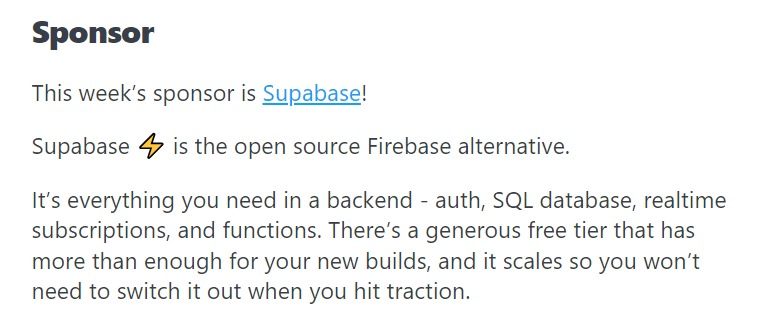
The folks at UI.dev have a couple of popular developer-focused newsletters that include sponsored content in a number of different forms. Their React Newsletter includes a note at the top of each issue that the issue is sponsored, and it’s always one sponsor per issue.
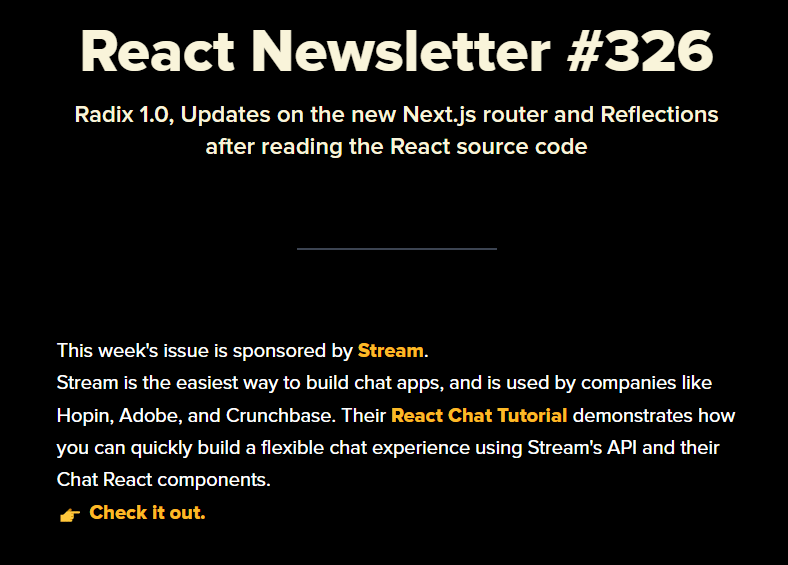
This type of sponsorship might be more of a long-term thing, a deal you’ll make with a specific brand that creates a partnership between your brand and theirs. UI.dev’s other more popular newsletter, Bytes, includes a section called “Spot the Bug,” which usually has a sponsor attached to it.
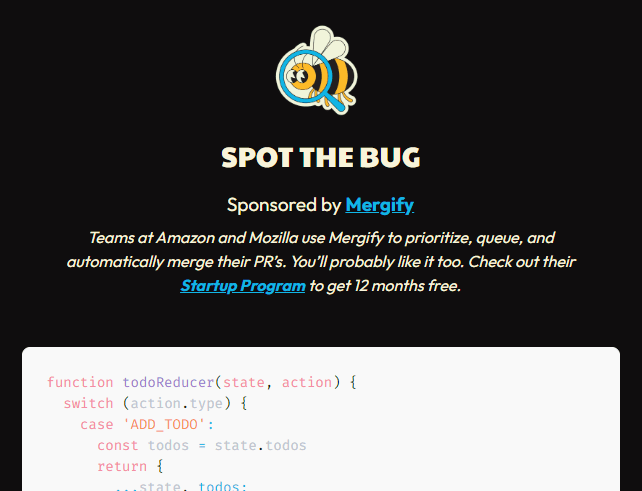
So keep those examples in mind. You might have some specific spots in your newsletter that you can monetize, or you can sell an exclusive sponsorship for an entire issue.
Branded merchandise
If you have a dedicated subscriber base, this method of monetizing your newsletter could be lucrative, whether your subscriber number is large or small. Morning Brew is an excellent example of a brand that’s taken advantage of their huge following by producing quality branded merchandise that their readers love.
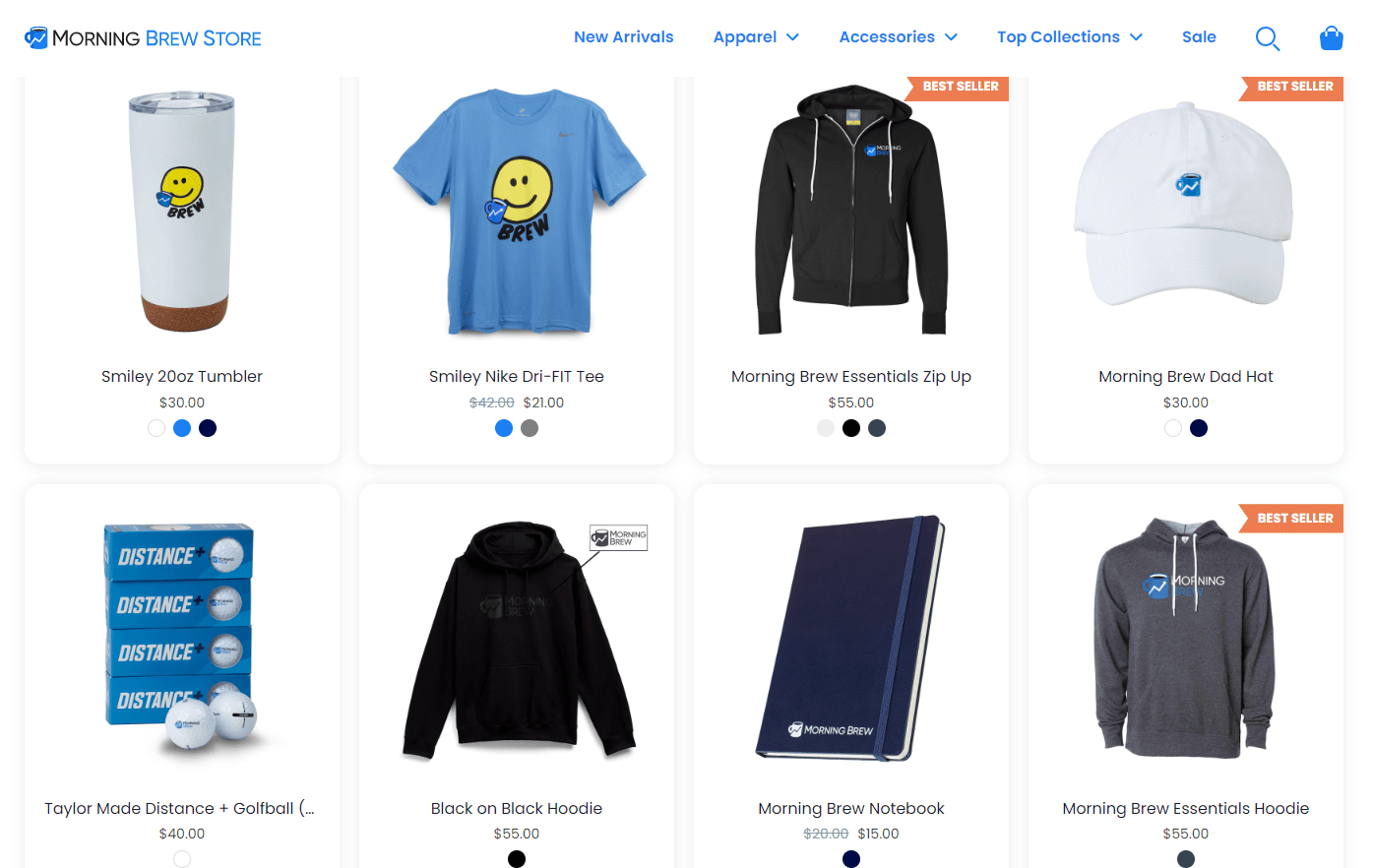
Tech Cabal is another popular platform that offers various tech-related newsletters. They have a merch store where they sell various tech and crypto-related products.
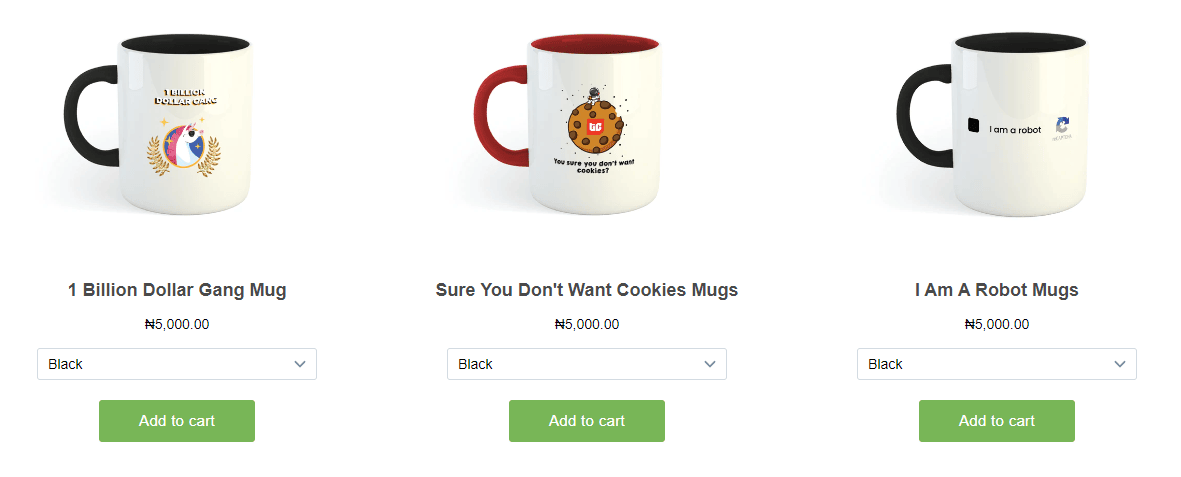
Admittedly, selling merchandise isn’t for everyone and likely won’t be lucrative for smaller newsletters, but it’s something to consider as your brand starts to grow.
Newsletter display ads
Probably the most common way to monetize a newsletter is using display ads, and this is somewhat of an extension to the sponsored content I discussed above.
Display ads are a little more traditional, similar to what you’d find on a blog or website. They might take the form of banner images or possibly a combination of text and images with a call-to-action.
The Cooperpress newsletters are a good example of using display ads effectively, consistently, and seamlessly in their newsletter content.
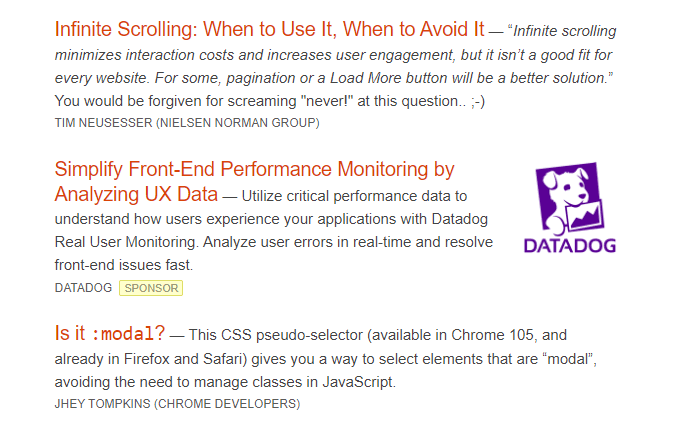
In some cases, these ads might be text-only with a simple “sponsor” tag. The Bytes newsletter, mentioned previously, includes a single sponsor in their “Cool Bits” section.
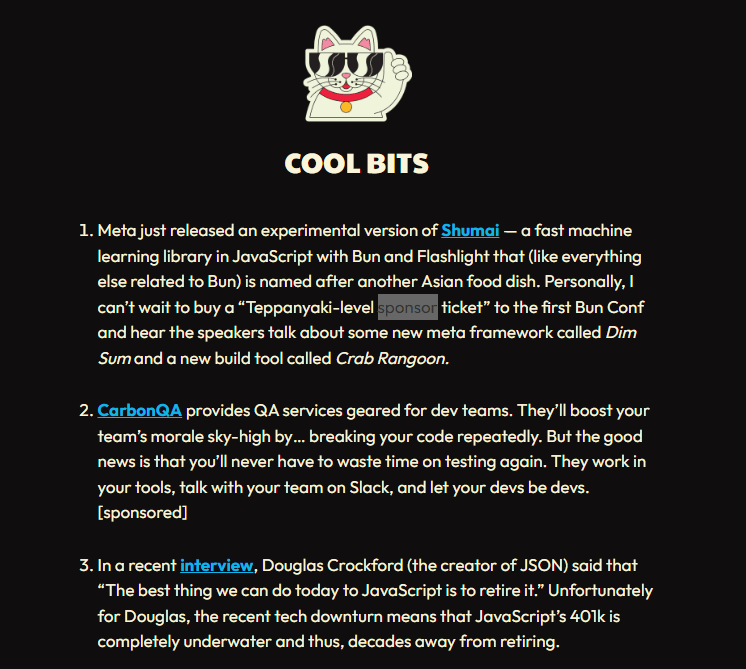
For any kind of display ad, as long as there’s some indicator that it’s a sponsored spot, your audience will generally be fine with this form of monetization.
Another form of display ads you can consider is classified ads. Some newsletters are including classified sections in their newsletters. These are often lower-cost ads towards the end of the newsletter.
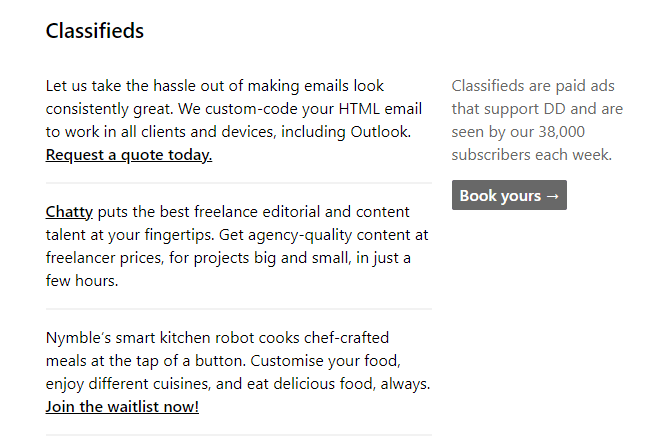
Dense Discovery is a popular newsletter that includes affordable classified spots in every issue. These are great for advertisers who want to get their product in front of a large audience but don’t have the budget for higher-priced ads.
Here are a few newsletter ad networks you can sign up for to sell ads for your newsletter:
Selling digital products
Your monetization strategy doesn’t have to center around ads. You can use your newsletter to promote other projects, including ebooks and courses. This can be original content or even repurposed content.
For example, in one of my newsletters, Web Tools Weekly, I often include a JavaScript coding tip in the intro. I’ve refined and repurposed that content into a series of ebooks. Others have done similar compilations using blog content.
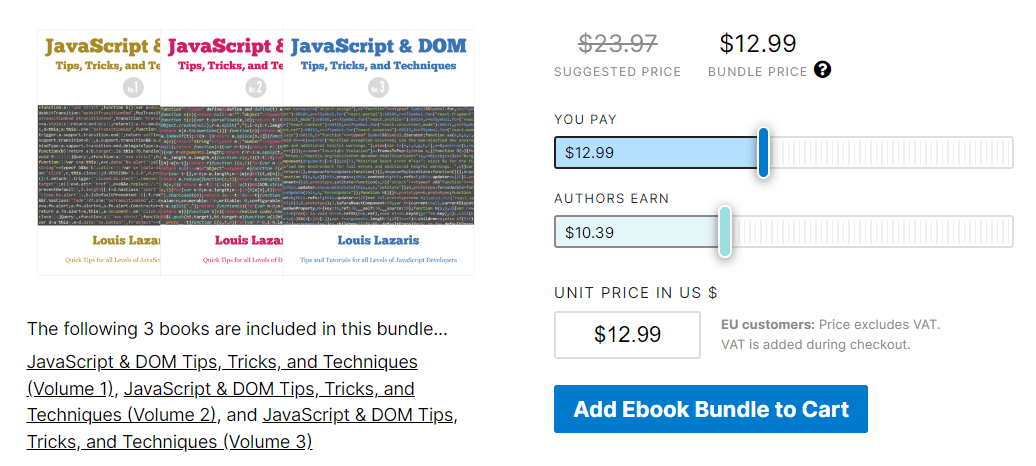
You can also use your newsletter to promote a video course or book containing all original content. Original content would sell better, but the overhead for repurposed content is quite low. Often, readers like to have your existing content in PDF or EPUB format that they can access anywhere, so this works for creating some extra money off already existing content.
Promote other monetized content
This option is not a direct way to monetize your newsletter, but it’s something you’ll want to consider. For example, you can use your newsletter as an indirect marketing funnel to promote other content.
You might have a blog , a SaaS app, or a podcast to promote. If your newsletter features links to external content or apps, you can occasionally mix in a mention of your own products elsewhere. The idea here is that you monetize the outside content, but not necessarily the newsletter content directly.
Niche affiliate marketing
Affiliate marketing is used by a number of different blogs, websites, and newsletters. Newsletters in particular seem to be a good place for curated affiliate programs that fit well with the audience you’re targeting.
In my own dev-related newsletter, mentioned earlier, I’ve tried different kinds of affiliate programs. By far the most successful one I’ve run is affiliate links for web development courses. I don’t typically include those, as I’m normally selling ads in the customary way. But when I do, it usually leads to at least one conversion, and often multiple.
Thus, pick an affiliate that is in line with your readers’ interests. For example, if your newsletter is about how to be a successful team leader or CEO, then your affiliate links might be a subscription to a productivity app or a course on self-improvement or management skills.
Swapstack recently launched something they call Plug & Play that allows you to include curated pre-approved affiliate links in your newsletter. I’ve used these myself and they’re an excellent way to make a few extra bucks to monetize even a small newsletter.


